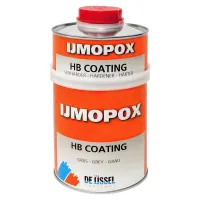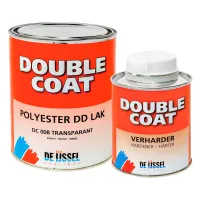Variopox injection resin

- Very thin-flowing epoxy
- Penetrates deeply into wood
- Can be used as a primer coat
Variopox injection resin is a solvent-free primer based on a low-viscosity epoxy resin. The 2-component injection resin is suitable for impregnating end-grain wood, hardwood, softwood, cement and other absorbent substrates. Variopox injection resin is often used as an epoxy primer. Due to its low viscosity, the injection resin penetrates the substrate well.
The injection epoxy is paintable and improves the adhesion of Variopox Impregnating resin, IJmopox ZF primer, IJmopox HB coating, Double Coat and Variopox Roll coating.
Benefits of Variopox injection resin
- First layer in preservation systems and adhesive bonds for wood, osmosis repair systems for polyester and epoxy systems for cement-bound floors.
- Reduces absorption of highly absorbent substrates.
- Promotes adhesion of subsequent layers of epoxy or polyurethane coatings.
- Sandable.
- Good resistance to water immersion and various chemicals.
Applications
Examples of applications for injectable epoxy:
- Boat hulls (underwater).
- Window frames.
- Timber structures.
- Concrete basements.
- Concrete floors.
After injection, the substrate can be further treated with epoxy in combination with glass fabric and can be finished with DD paint.
Specifications
Size: 750 ml, 7.5 kg
Suitable for: polyester, wood and woodcore
Mixing ratio: 2:1 (67 grams of resin, 33 grams of hardener)
Processing temperature: 15 to 25°C
Pot life: approx. 30 minutes
Dust dry: after 6 hours
Recoating interval: 24 hours
Consumption: 150-250 grams per square metre (depending on porosity)
Shelf life: 1 year (stored at 15-20°C in the dark)
We have a number of recommendations for working safely with polymers. At Polyestershoppen you will not only find the polymers themselves, but you can also purchase all the protective equipment you need from us. If you have any doubts or questions, please contact our customer service. We can give you advice on how to work safely with polymers.





